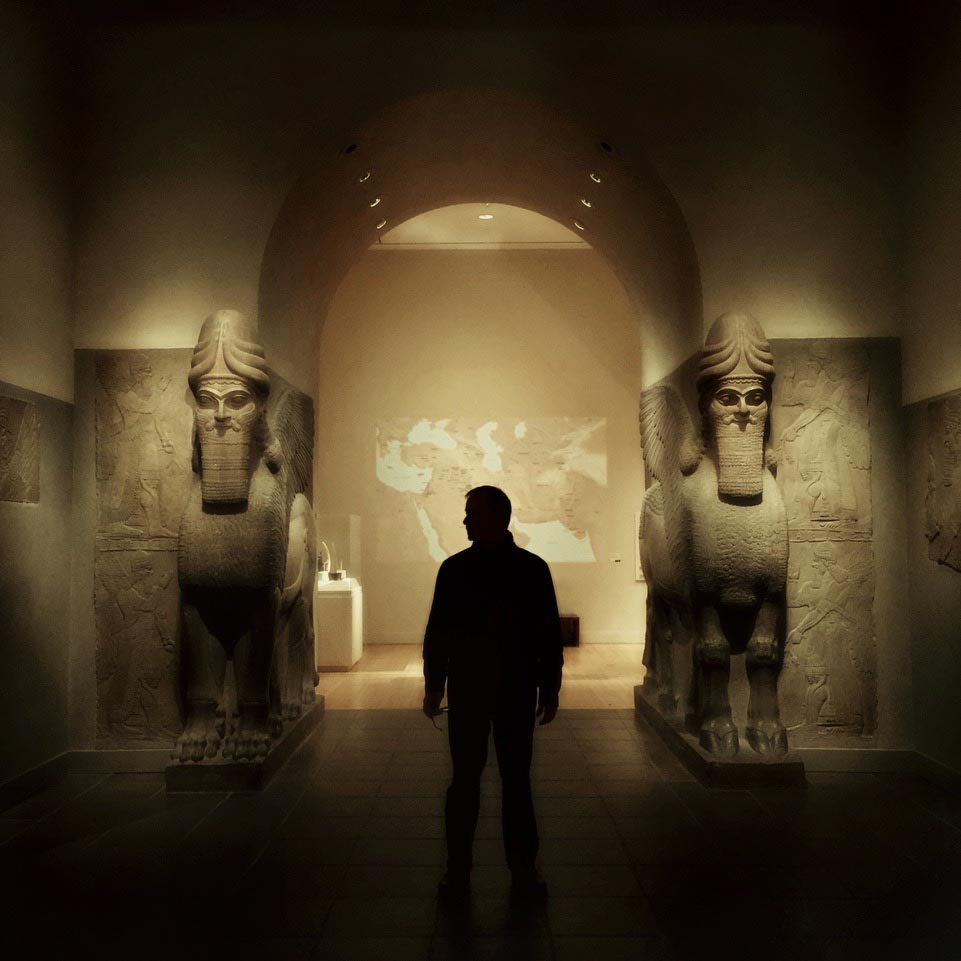STORYTELLING PERFUME
AND THE SENSATION OF PLACE
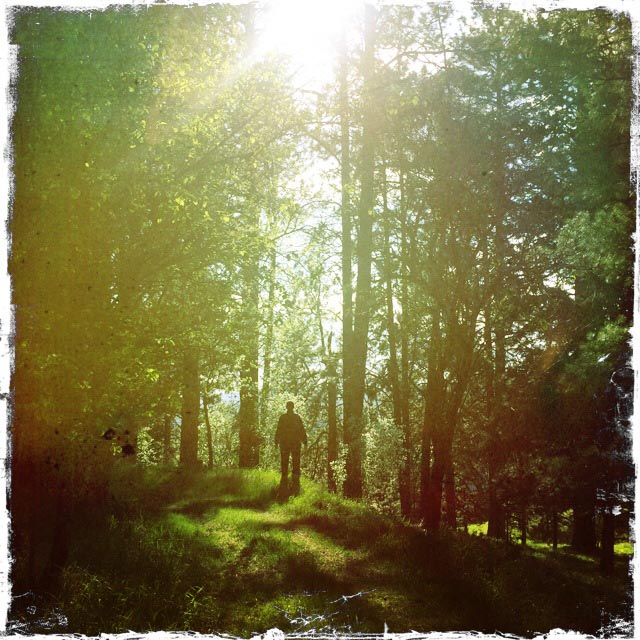
THE WANDERING WONDERMENT:
AN EXPLORATION OF MEMORY AND SCENT
I’m walking the city, or the forest, or the beach—
and what comes forth?
“What’s that smell? It reminds me of…”
Scent memory:
it’s right in the front of the brain—the most forward panel of the mind, in memory.
As has been defined—sensing scent is frontal, right there with memory.
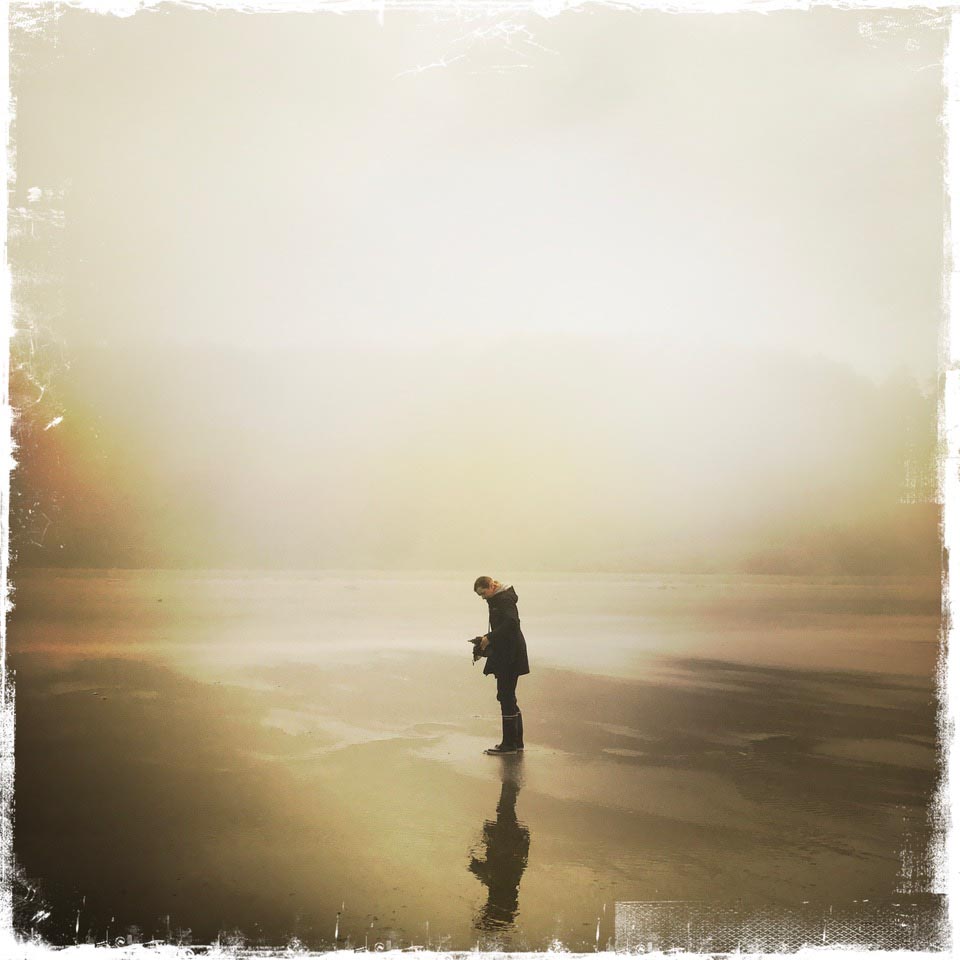
What’s key to that memory?
The sensing of scent, the perfume of place—the smell of a memorable moment of fragrance which speaks to the intractable remembrance, sentience and wandering; exploring the fume of an experience.
Getting around, wandering, I find myself not infrequently smelling my way through places. Scent is memory; it’s the definition of recollection in experience. You can recall an experience, a place that you’ve been to—and you can name the scent of place that you’ve journeyed.
It’s interesting how scent is so subtle, to offer hints and wisps that incessantly shift and waft in, and out, and back in again.
Entering any place, aside from sight and touch, I reach into scent.
Any scent isn’t simply one fragrance, but many–a tiering of notes that are molecularly gathered, stored and interpreted by the mind.
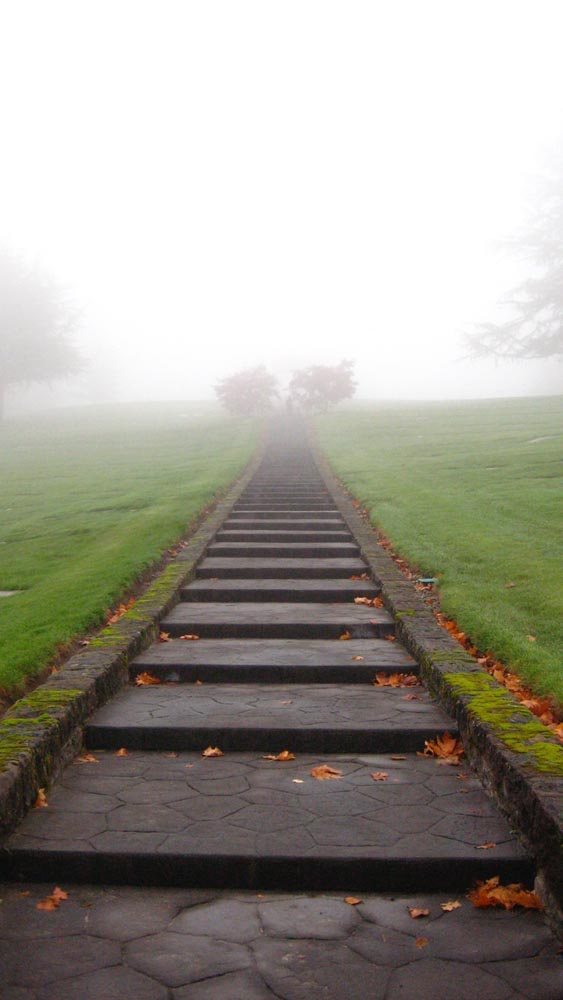
What is the mental sorting of the “flavors” of fragrance? It’s interesting how the varying intermingling of geography, light, latitude, culture, income can all play into the exposures of how fragrance fits in the sensation of place.
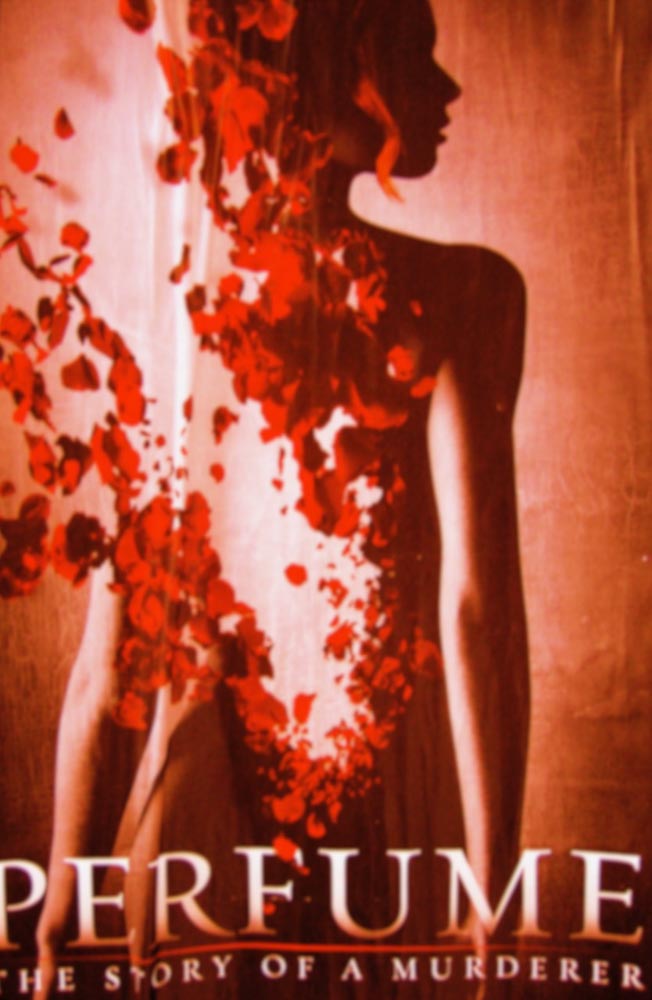
I recall, in the German edition, the opening pages of Patrick Suskind’s “Perfume: The Story of a Murderer” as setting the tone for that book that is, and has been, forever unforgettably powerful to me; it’s set in Paris, the 18th century. The most remarkable plaiting that runs the rhythm of textual tapestry in that book, of course, is scent, good or bad—as noted here, in this opening phrasing:
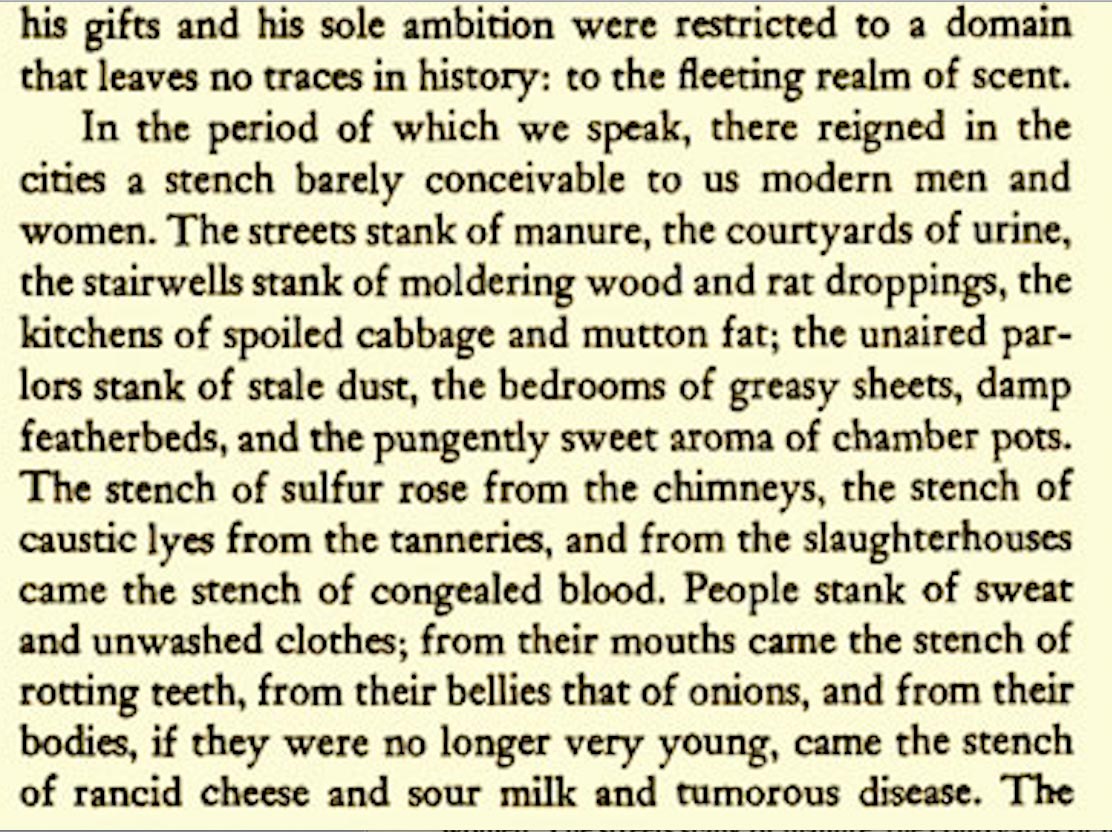
This poetic treatment goes on, literally, for pages. Nearly every early experience for Grenouille, the froggy prince as the protagonist positioning, the monster scent maker, is described (viscerally) in the smell of things.
Walking, this morning, I had the chance to experience that,
from the scenting sequence of being outdoors, exploring—
which comes to these notes:
salted stone
marshy and swampy irrigation
wet stone
rotted seaweed
salty decay
seawashed timber
crushed sitka needles
woodsmoke
muddied laurel leaves
rainy salt mist
As a reader, and journeyer, I’m sure that you have a sense about the meaning of each of these for you; and likely, your interpretation will be wholly different than mine. In the perfume trade, there are noses that can define and articulate scents that have been captured—as molecular gatherings. Luca Turin: theoretically, offers his thinking on scent / brain comprehension in a TED video overview here.
And aesthetically: to be a scenteur, a nose.
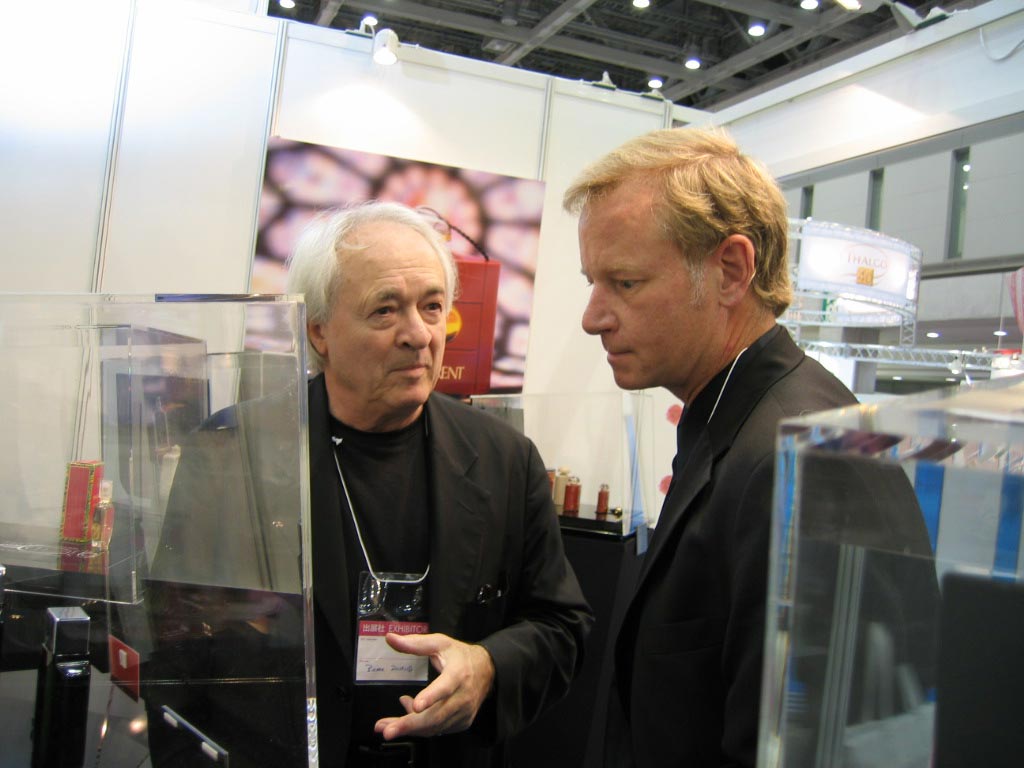
Or to design for a nose, Pierre Dinand and Tim Girvin in Tokyo.
The notion of perfume and pollen—the unguent of fragrance—is ancient, the Mesopotamians utilized pollination as a tool to increase their yields of palm-related harvesting, which, too, aligns with the most fundamental gathering of the ingredients of fragrance for natural attraction. As in this installation at the MET, NYC.
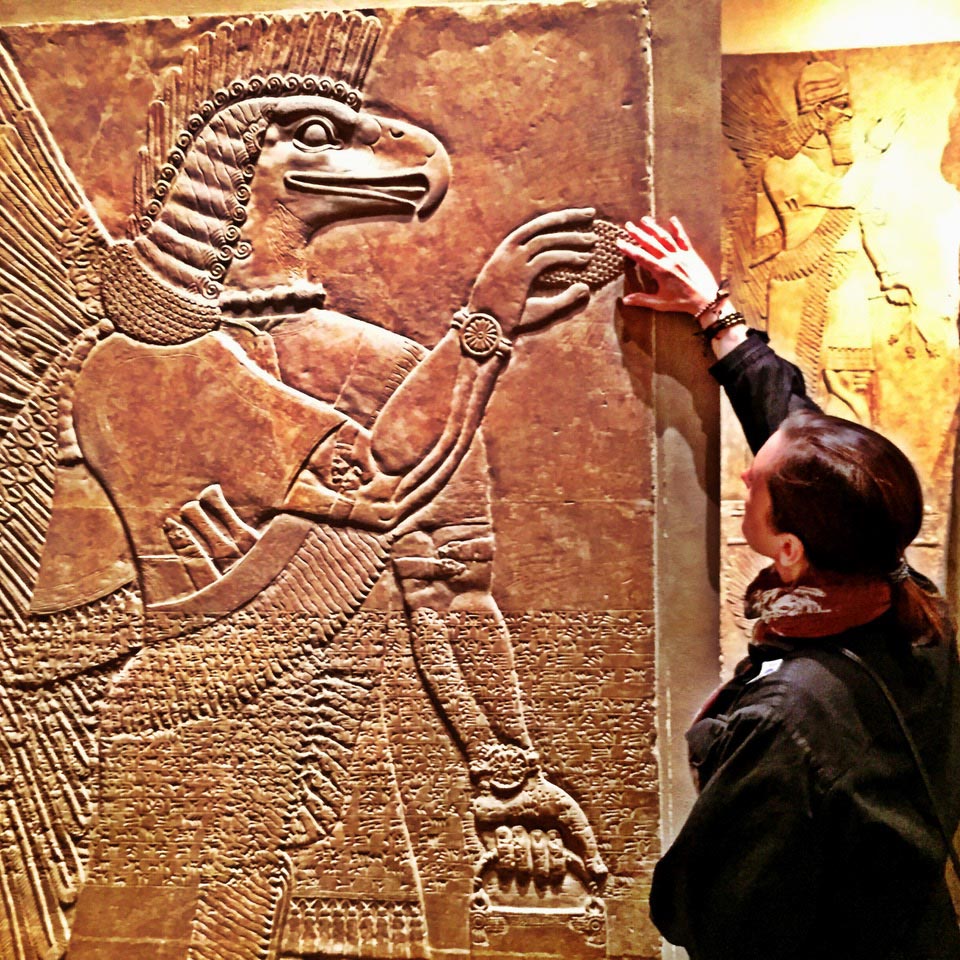
Personally, I believe that anyone can become increasingly sensitive. It’s a matter of attention — paying attention to what’s coming into your nose and brain and thoughtfully interpreting it. “What’s that smell?” Rather, “what’s that scent?” A smell, to my take, is undistinguished; it’s literally uninterpreted. Scent is articulated, it’s a thinking, sensate response.
Sometime back, in meeting with the then CEO of Eddie Bauer (not Neil Fiske, who we’ve written about already.) Jack Sansolo, we talked about the concept of procession. And scent. What if there was a designed sequence in scenting—and sound–-as a person moves into the foyer of place-making design? That was decades ago—but even today, it emerges as a continuing processional strategy. Our pitch, along with working on later retail design development for Eddie Bauer, was in building stories—brand positions—that created a modeling for new conceptions. Like a return to the craftsman, the home and hand made, the classic sportsman. That became 600 Madison Avenue, Eddie Bauer.
Of course it started here, Seattle—with Eddie in the doorway.
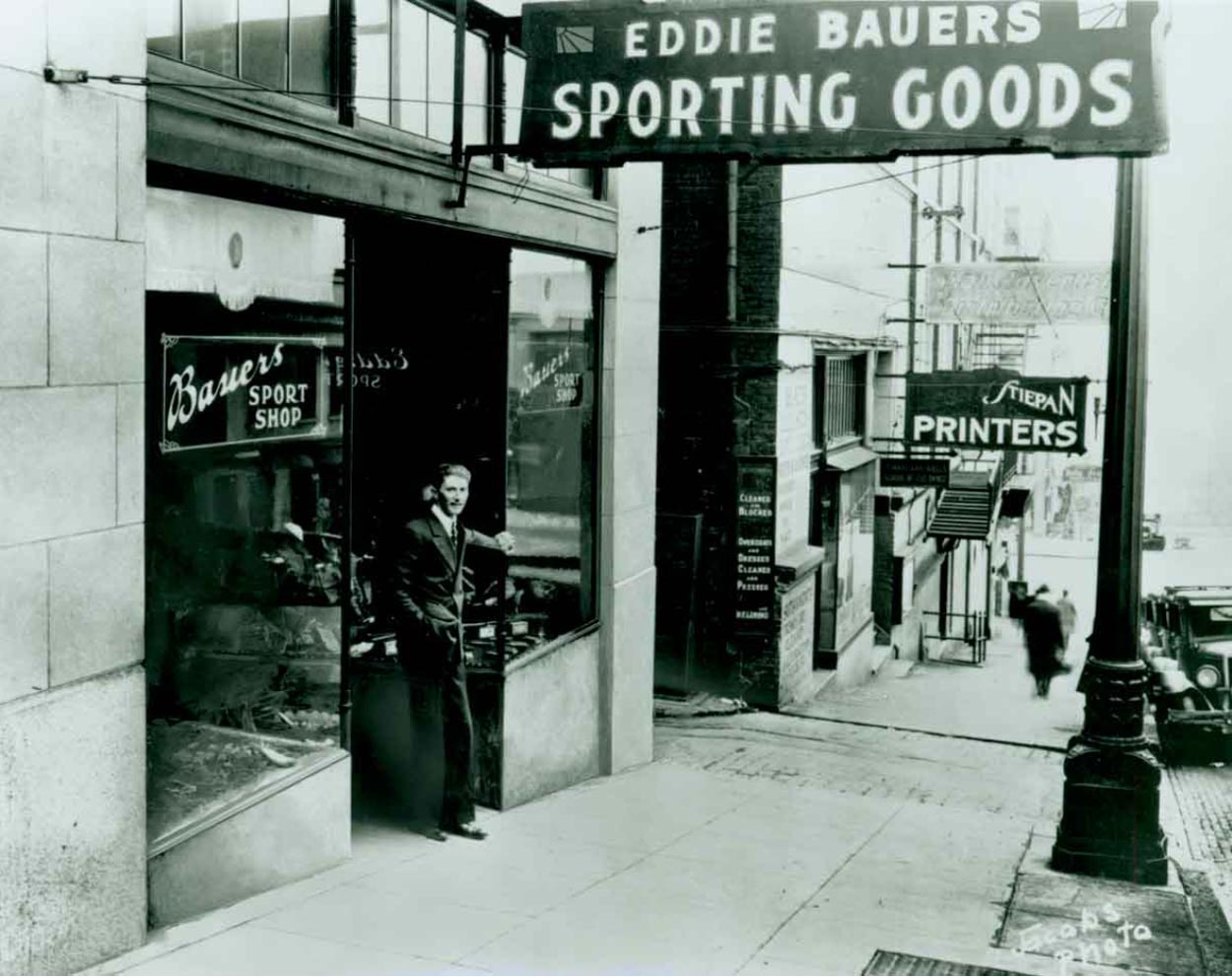
But, in retail, the idea that scent transforms—that it, too, changes and varies in tone and content in the place—and in the experience of the place is less than innovative—it’s not without prescience to note the concept of scent shifting in space, moving from one zonal variation to another, is actually how fragrance works, and how it’s interpreted.
The nose gathers the scent molecules, they are sequenced in the channels of the cavities of scent sensing, and, in the sequencing noted in the linked lecture by Nobel Laureate, Richard Axel, they pass into interpretation and memory.
Everyone approaches this in a different manner—how they might think, or not think, about the conceptions of scent sequencing and meaning (and, to recollection, know that: meaning, mind and memory are all derived from the same prototypical word: men).
Which, in a way, was how
I began this sequence of ideas.
That is: walking, even your office, your home, your street—what’s the scent sequence?
I love that—what’s first, your opening impression, your first sensing inhalation?
And I love this:
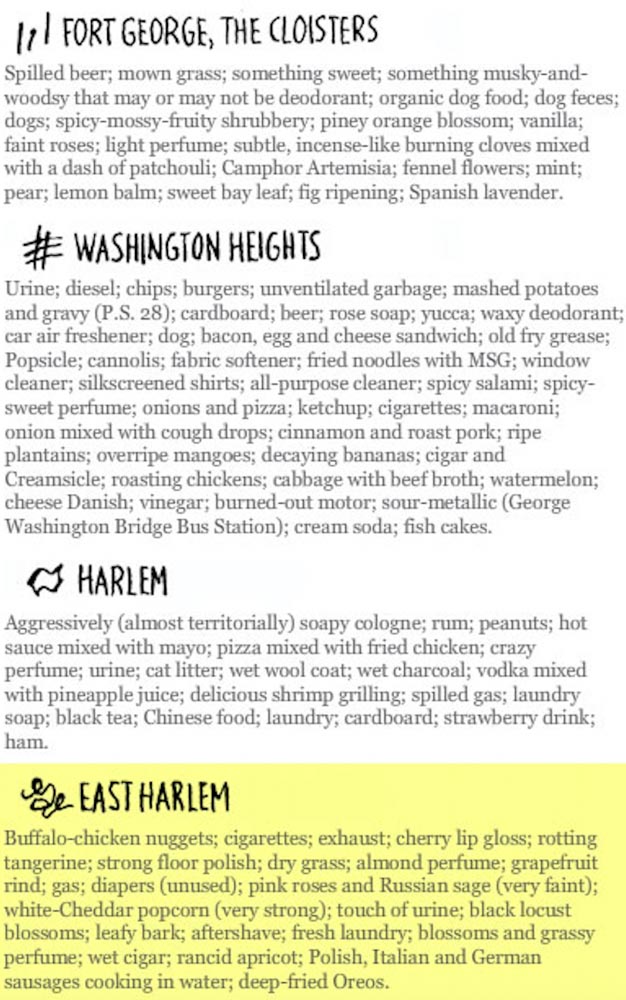
Jason Logan created this scent wandering, “Scents and the City“, he’s a writer, blogger and illustrator from NYC. Here’s how he’s described his journey:
“New York secretes its fullest range of smells in the summer; disgusting or enticing, delicate or overpowering, they are liberated by the heat. So one sweltering weekend, I set out to navigate the city by nose.”
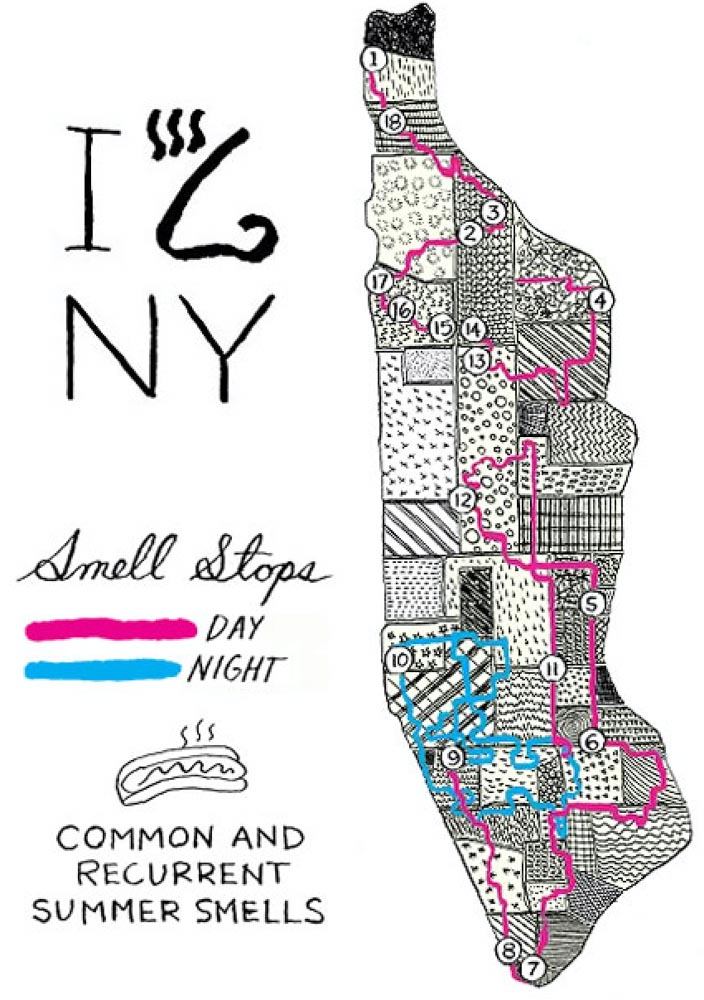
An interactive feature, worth checking out, exploring.
Finally, to the notion of the breadth of experience in scent: the words of fragrance—examine this listing of words that are about, that reach to, or reflect, the concept of smell. Richly descriptive, beautiful, lustrous, robust, experiential.
What memory, scented, for you?
We were talking about this– in the office recently, a present given to me by the GIRVINists, it was a test, that ultimately I passed. A grouping of bottles,
each with a fragrance—
“what’s this one?”
*Experientiality—design thinking founded on a multi-sensory strategy of experience development: integrated holism.
Onwards with the Journey
Tim Girvin | Principal, Founder and Chief Creative Officer,
GIRVIN | Strategic Branding & Design
www.girvin.com
S I T V I S V O B I S C U M
MCMLXXVI
IBI FUNDATA
